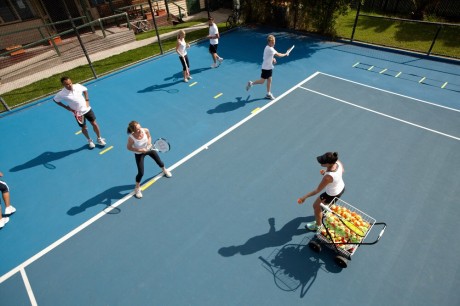What is Cardio Tennis ?
Sick and tired of running on treadmill or doing boring cardio workouts to lose weight or increase your endurance. You don’t have to be Rafael Nadal or Sam Stosur to enjoy the energising workout that is Cardio Tennis! Constant movement is the focus as a Tennis Canada qualified coach guides you through a series of fun and heart-pumping drills that cater for all abilities and fitness levels.
On average a Cardio Tennis workout runs for 60 minutes and comprises three basic elements:
- warm-up
- cardio segment (drill-based and play-based activities)
- cool down.
The program is designed for participants to wear heart rate monitors (available for purchase at the www.SwingSchool.ca), exercise to music, play with low-compression balls and use a variety of equipment to achieve the perfect workout. And, at the end of your session, you can check your stats on the heart-rate monitor to find out just how hard you worked!
Lose weight, get fit, have fun
Cardio Tennis is enjoyed best with friends – male or female. If you don’t like exercising alone, then you will find Cardio Tennis the perfect motivator. Get a group of mates together or make some new friends in a fun and active atmosphere!
As well as being social, it’s a great way to boost your fitness and lose weight. According to the Tennis Industry Association, during a Cardio Tennis session, women will burn between 300 and 500 calories, and men will burn around 500–800 calories (on average).
When and How?
Cardio Tennis at “The Swing School” will be run on a term basis similar to our group coaching programs. You fill out a registration form and do fun and heart-pumping tennis-based activities!
Cardio tennis will run on the following days:
Monday – Friday 9-10 pm, 10-11 am
Saturday 8-9 am, 11-12 pm
Sunday 8-9 am, 11-12 pm
Cost $150 per month (based on once a week work-out)
